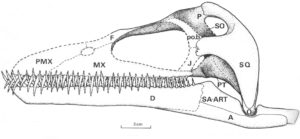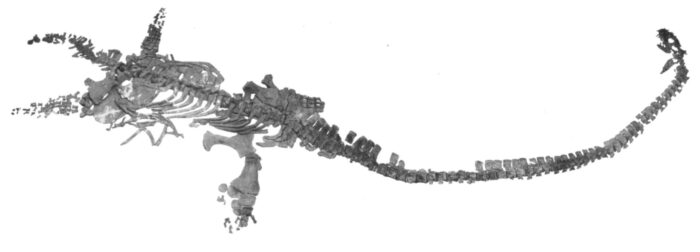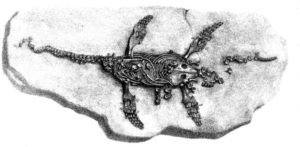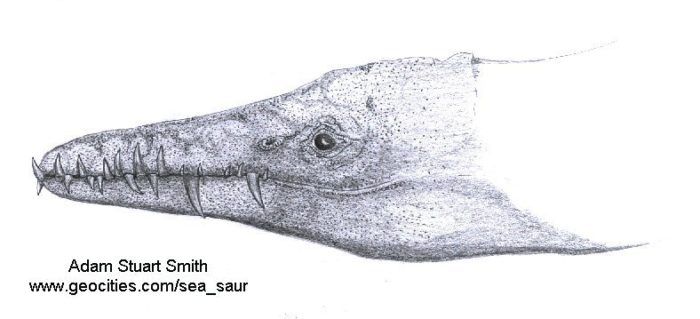Category «Plesiosauria»
Kimmerosaurus

Kimmerosaurus is a poorly known cryptoclidid plesiosaur known only from skull and neck material (Brown 1981, Brown et al. 1986). It differs from other plesiosaurs in the large number of needle-like teeth in its jaws, and in the form of its teeth, which are completely smooth and lack the longitidinal ridges present in other plesiosaurs.
Hydrotherosaurus

Hydrotherosaurus is a long-necked elasmosaurid from California, USA. It is represented by one of the most complete elasmosaurid skeletons ever discovered, so Hydrotherosaurus is one of the best known members of this family. The almost complete type skeleton of Hydrotherosaurus was discovered in the Panoche Hills by Mr.
Eretmosaurus

The genus Eretmosaurus was erected for ‘Plesiosaurus’ rugosus by Seeley (1874). Eretmosaurus is a rogue taxon in cladistic analyses and researchers have been in disagreement about its taxonomic affinity. Eretmosaurus has been included in several different families: the Rhomaleosauridae based on the anatomy of its girdles (Persson 1963); the Pliosauridae (Brown 1981), the Elasmosauridae (Bardet 1995, Bardet et al.
Elasmosaurus

Elasmosaurus is one of the most widely recognised plesiosaur names and has become a stereotype for all elasmosaurids. However, it is relatively poorly known. The type and only known specimen of Elasmosaurus platyurus (ANSP 10081) includes the tip of the snout, occipital condyle, and the majority of the vertebral column.
Edgarosaurus
Cryptoclidus

Cryptoclidus, often wrongly spelled ‘Cryptocleidus’ after Andrews (1909), is a moderately sized plesiosaur up to 3 metres long. It is known from a large number of individual specimens from the Oxford Clay Formation. Fossils of Cryptoclidus are relatively common, and provide a complete ontogenetic sequence from very young to old adult individuals.



